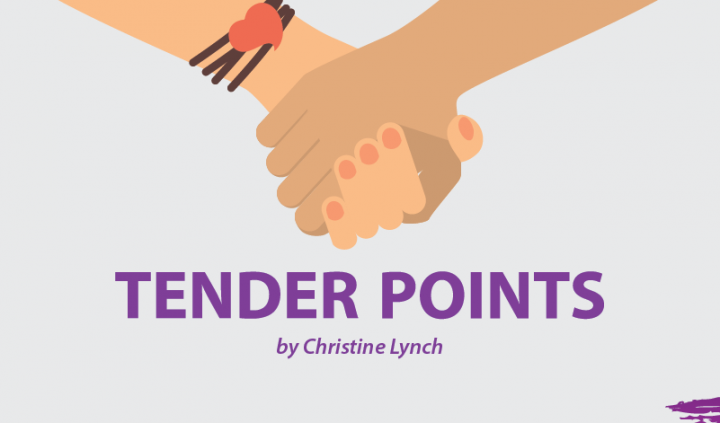When discussing fibromyalgia and myofascial pain disorder, the terms “trigger points” and “tender points” are a common source of confusion. Tender points are commonly associated with fibromyalgia, whereas trigger points are seen in both disorders. But while tender points and trigger points are often used interchangeably, they are not the same.
Tender points
Tender points are 18 specific places on the body that were previously the sole manual diagnostic criteria for fibromyalgia. If you had a history of widespread body pain for more than three months, and if your rheumatologist determined you were tender in at least 11 of these 18 places, you had fibromyalgia. If you had fewer than 11 tender points, you did not — it was as simple as that.
Over time, however, it became apparent that tender points come and go. Some days a patient might have only nine or 10; at other times, the patient might have 15, or even all 18. Then other issues such as non-refreshing sleep, cognitive difficulties, irritable bowel syndrome, jaw pain, headaches, anxiety, and depression became recognized as fibromyalgia symptoms.
The current diagnostic method for fibromyalgia is more comprehensive than before, and the tender point exam is one of several factors considered.
Trigger points
Trigger points are different from tender points. You may have many more of them, and they can be located in any of the 600 muscles of the body. A person who has myofascial pain syndrome can have multiple trigger points throughout the body.
Each trigger point is a hard, sore spot within a skeletal muscle. Its distinguishing feature is referred pain; that is, the pain is felt in a remote location as well as locally. For example, my recent bout of occipital neuralgia involved two trigger points just beneath the right side of my skull. It was acutely painful in those two places and equally painful on the top of my head.
Trauma or repetitive motion is often responsible for stress on the muscle fibers and the activation of a trigger point. People who frequently experience stress and anxiety may be more likely to develop trigger points in their muscles. It is thought that clenching of the muscles is a form of repeated strain that leaves muscles susceptible to the formation of trigger points. In my case, it was likely caused by too many hours spent sitting at my computer with less than perfect posture.
Activated trigger points are extremely painful. Common treatments are physical therapy, heat, ice, anti-inflammatory medications, massage, acupuncture, and injection. Sometimes the treatments will be fast and effective. At other times, healing is slow, and the pain can persist. Once treated, a trigger point may subside to a latent form, and be painful only when pressure is applied. However, it doesn’t vanish. Another trauma or additional repetitive motion may cause it to erupt into an active, painful state again.
My current bout of occipital neuralgia is a reactivation of a previous trigger point, and it is proving to be very stubborn to shift. Despite two trigger point injections — one with cortisone and one without — and an occipital nerve block, I’m still awaiting relief. I continue to treat myself with ibuprofen, hot/cold compresses, and stretching. I’ve also started massage therapy.
This experience has reinforced a lesson that I learned long ago, but had forgotten: Avoid repetitive motion at all cost. While it’s difficult to stop doing something you enjoy before you feel tired, knowing when to quit is essential for those with fibromyalgia. My new practice is to set a timer for 15 minutes when I sit down at my computer. I need that reminder to get up and stretch — the consequence of forgetting to do so is not worth it.
***
Note: Fibromyalgia News Today is strictly a news and information website about the disease. It does not provide medical advice, diagnosis, or treatment. This content is not intended to be a substitute for professional medical advice, diagnosis, or treatment. Always seek the advice of your physician or other qualified health provider with any questions you may have regarding a medical condition. Never disregard professional medical advice or delay in seeking it because of something you have read on this website. The opinions expressed in this column are not those of Fibromyalgia News Today, or its parent company, BioNews Services, and are intended to spark discussion about issues pertaining to fibromyalgia.


Wow! This article really has really me in being able to articulate to others what I’m feeling. Thank you for sharing.